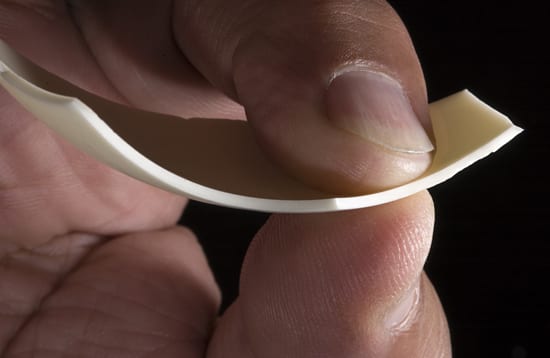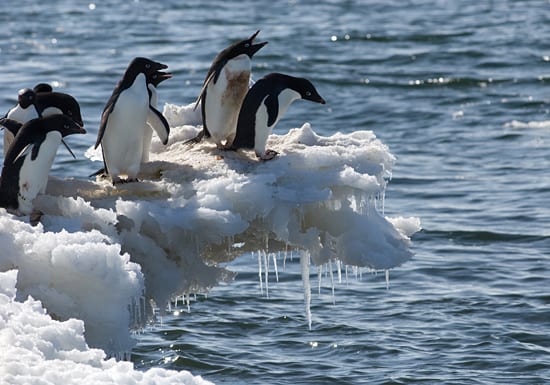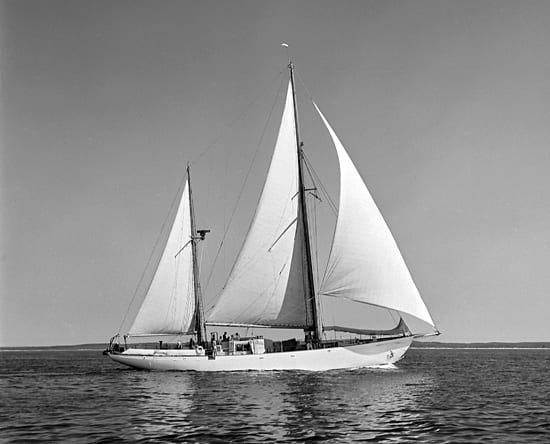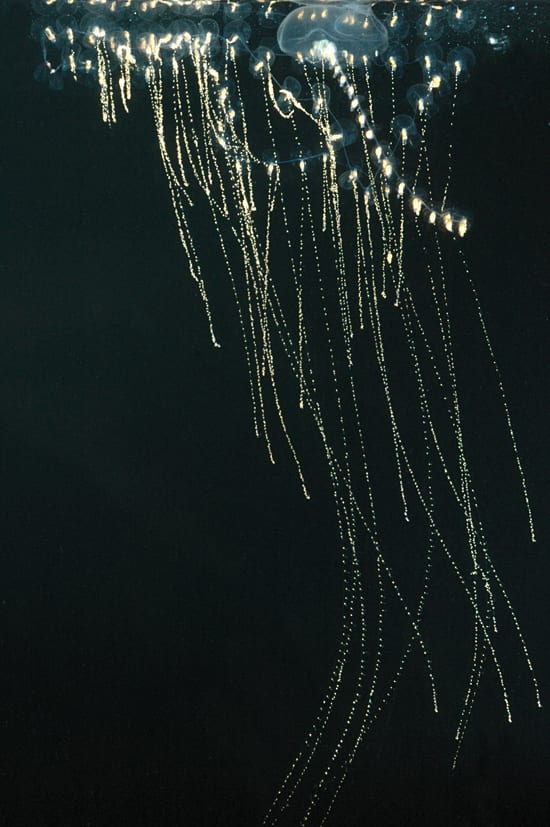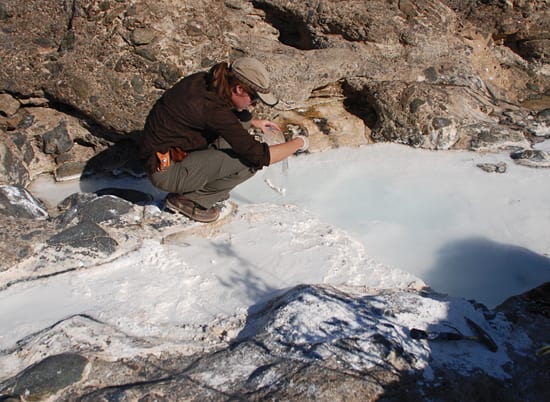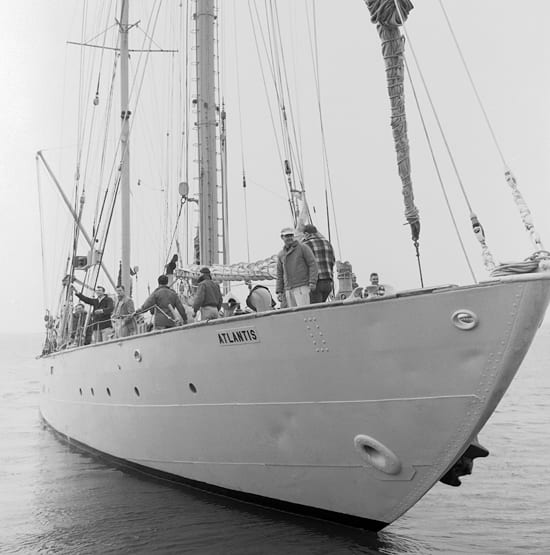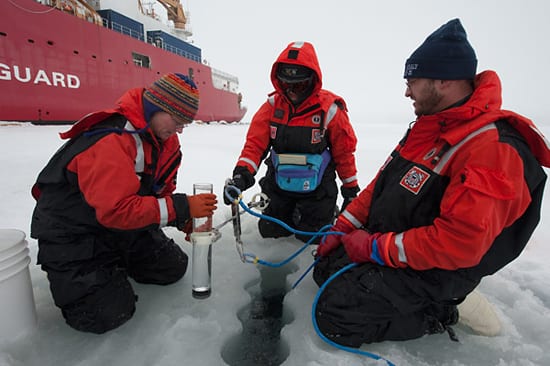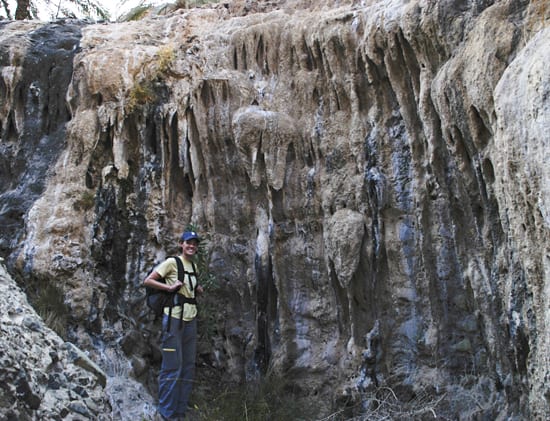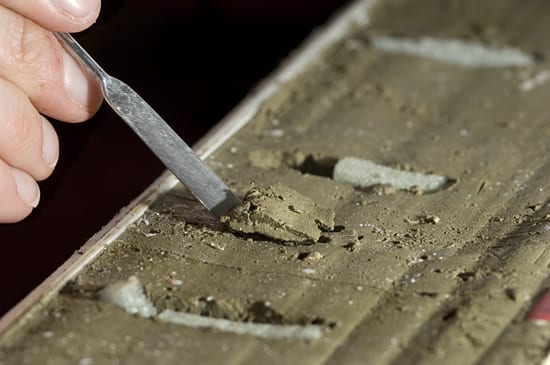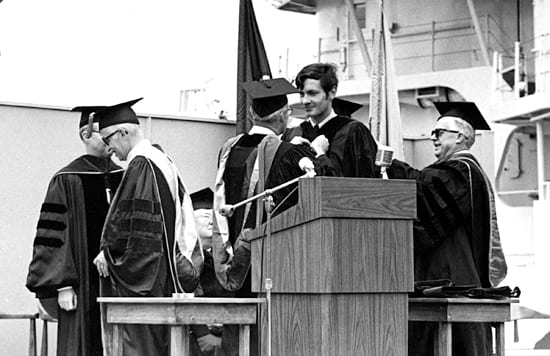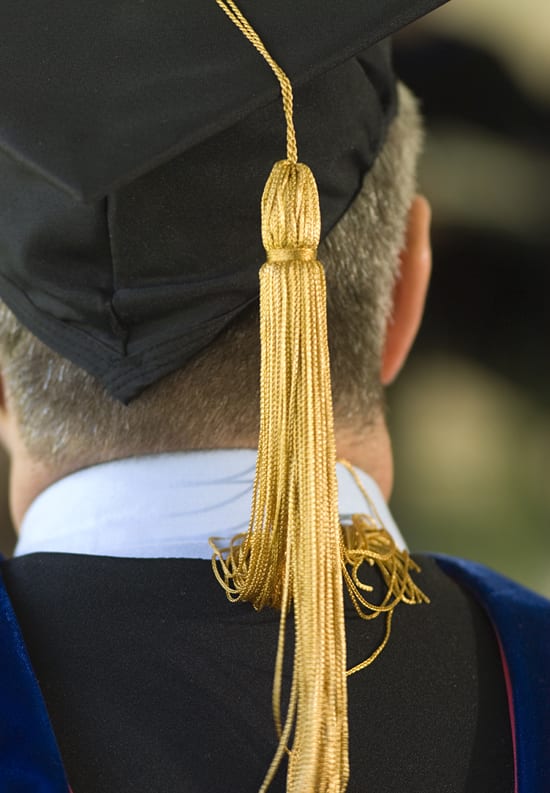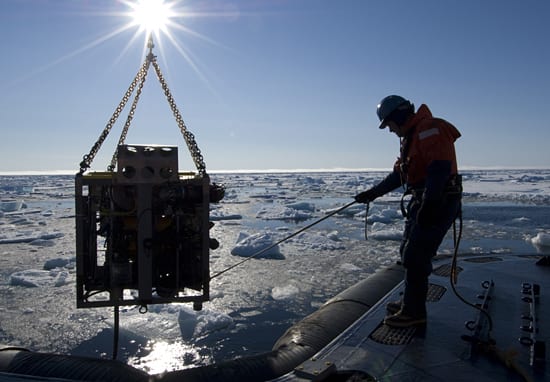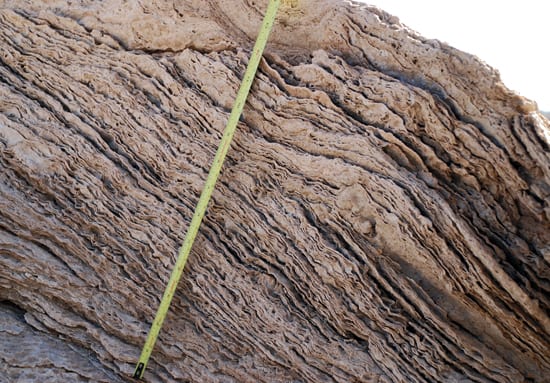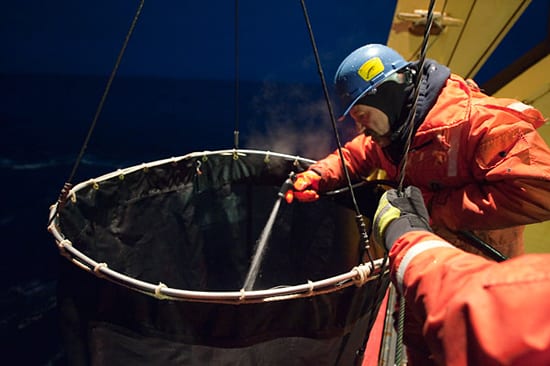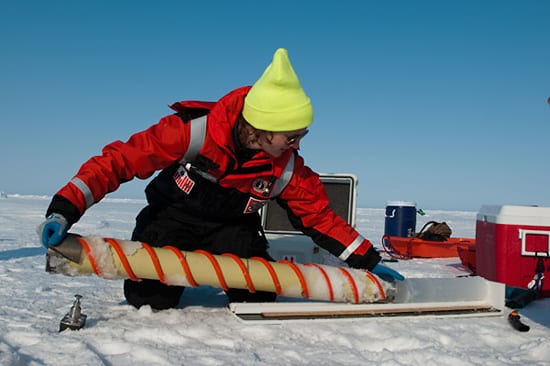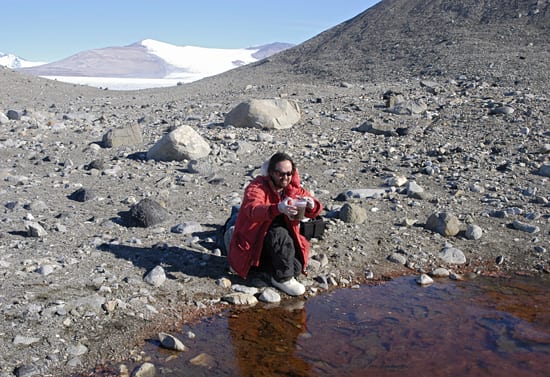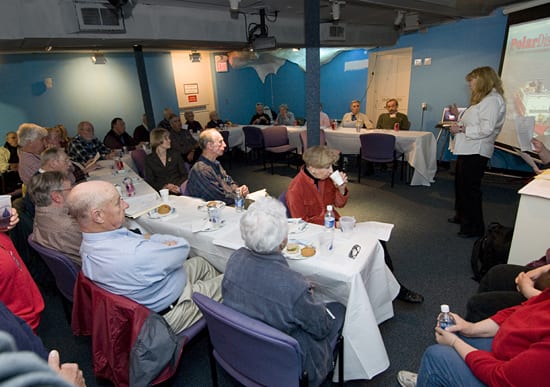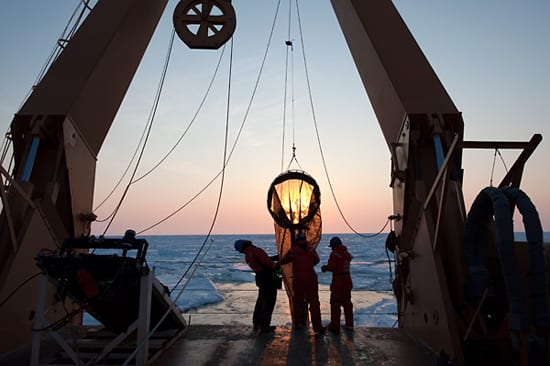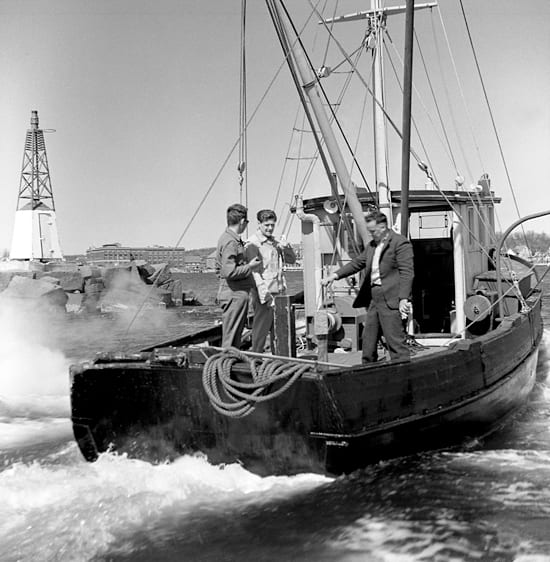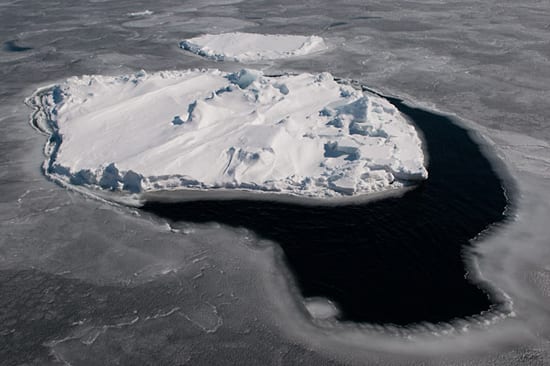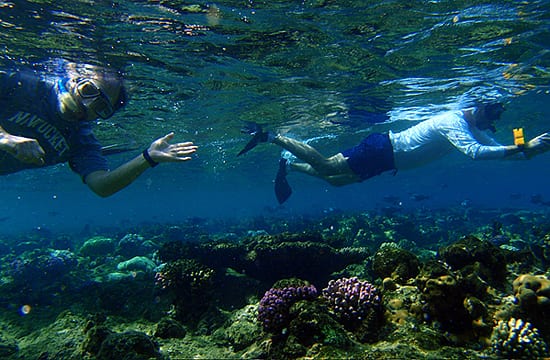Multimedia Items
Floating on shells
It took a village of engineers to build the new hybrid deep-sea vehicle Nereus, which dove to 10,902 meters (6.8 miles) in the western Pacific Ocean’s Mariana Trench on May…
Read MoreNo, no, YOU go first
One Adelie penguin looks doubtfully at the water while another cries out for it to get a move on. No penguin wants to be the first one in, so they…
Read MoreThe Aries
The Aries, a 93 foot ketch, arrived in Woods Hole in March of 1959 as a gift from R.J. Reynolds. She was refitted as a research vessel by June and…
Read MoreExtracting answers
Joint Program graduate student Kristin Pangallo’s childhood wish to work with whales and dolphins branched into a bachelor’s degree in chemistry then a job as a research technician at WHOI.…
Read MoreA curtain descends
Siphonophores, relatives of jellyfish made of compound units, drift in the endless space of the open ocean. Their many tentacles, studded with batteries of stinging cells, form a beaded curtain…
Read MoreDesert snow?
A trip to the snow? Actually, it’s mineral, not ice, as WHOI graduate program student Evelyn Mervine collects recently-deposited carbonate from a highly alkaline spring in the Samail Ophiolite—an area…
Read MoreFirst lady of the sea
Atlantis (1931-1964), which was the first Woods Hole Oceanographic Institution (WHOI) research vessel, pulls away from the WHOI dock in 1960. The first ship built specifically for interdisciplinary research in…
Read MoreWorking under icebreaker’s “Guard”
Working out on the ice in the reassuring presence of the U.S. Coast Guard icebreaker Healy, scientist Katrin Iken (left, from the University of Alaska-Fairbanks)—assisted by technician Pat Kelly (right,…
Read MoreStanding under a mineral waterfall
Jill Van Tongeren (a graduate student at Columbia University’s Lamont Doherty Earth Observatory) stands, for scale, underneath stalactites and stalagmites of the mineral travertine, in Oman. Evelyn Mervine, WHOI Joint…
Read MoreNo stick in the mud
Fern Gibbons, a graduate student in the MIT/WHOI Joint Program, extracts a sample of sediments cored from the seafloor. The long, round core is split lengthwise down the middle. The…
Read MoreThe first degree
From the very first student awarded a Ph.D. from the MIT-WHOI Joint Program— Frank Bohlen, here at the 1970 Commencement in Woods Hole—to the graduates of 2009 who receive their…
Read MoreTradition and new beginnings
Tassel and hood! The MIT-WHOI Joint Program‘s 2009 Ph.D. candidates will be hooded (the academic hoods’ colors and fabrics signifying the degree and field of study) in a ceremony June…
Read MoreSeize the Day
In 2000, graduates from the MIT-WHOI Joint Program in Oceanography/Applied Ocean Science and Engineering lined up on the WHOI lawn at Commencement, and Ph.D. candidate Nicole Suoja Tervalon marked the…
Read MoreBeneath the Arctic sun – far beneath
WHOI engineer John Kemp sends the sampling camera instrument Camper off on a solitary mission to the deep Arctic Ocean floor, from the Swedish icebreaker Oden. During the 2007 expedition…
Read MoreLayers of change
Graduate student Evelyn Mervine traveled to Oman recently to study an area of uplifted ocean crust exposed to the atmosphere, the Samail Ophiolite. The photo shows accumulated layers of travertine,…
Read MoreSpraying down copepods
Algae, ciliates, and other microorganisms get eaten by bigger creatures, like the zooplankton that WHOI biologist Phil Alatalo caught in his net. As part of the zooplankton team aboard the…
Read MoreIce harvest
On an expanse of ice-covered ocean, Gigi Engel, a graduate student at the University of Washington, slips an ice core out the core. She took the core to find and…
Read MoreFinding life in a harsh place
Scientist Mak Saito scoops up water on a moraine near the Ross Sea, Antarctica, in February 2009. Saito collected cyanobacteria (photosynthetic bacteria) from this polar environment for culture and analysis…
Read MoreRallying the troops for the season!
The Woods Hole Oceanographic Institution (WHOI) has more than 60 volunteers who donate their time in the Ocean Science Exhibit Center, Information Office, Archives, Peanut Butter Club, and various other…
Read MoreGone fishing for copepods
The zooplankton team aboard the U.S. Coast Guard Cutter Healy put their vertical net over the back of the boat during an April 2009 cruise in the Bering Sea to…
Read MoreCoastal stalwart
Since its beginning, WHOI has maintained a dedicated coastal vessel used by researchers studying the coastal ocean or testing equipment. In Down to the Sea for Science, celebrating WHOI’s 75…
Read MoreHole in the fabric of ice
In the middle of an expanse of ice, the U.S. icebreaker Healy came upon an unusual feature—open water, next to a large chunk of ice. Science writer Helen Fields and…
Read MoreNot in Nantucket any more
Nantucket? “If I had realized this photo might appear as Image of the Day,” said researcher Jim Churchill, here waving at the camera, “I would have worn a different shirt”…
Read MoreArctic inchworm
Photographer Chris Linder and writer Helen Fields accompanied scientists studying the Bering Sea ecosystem in April and May 2009. Together they chronicled the cruise aboard U.S. Coast Guard icebreaker Healy,…
Read More
